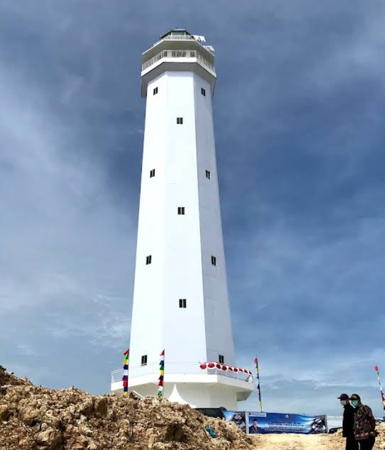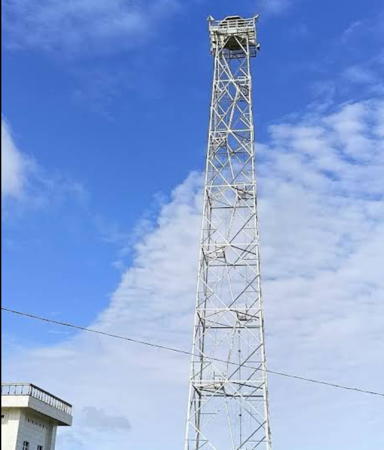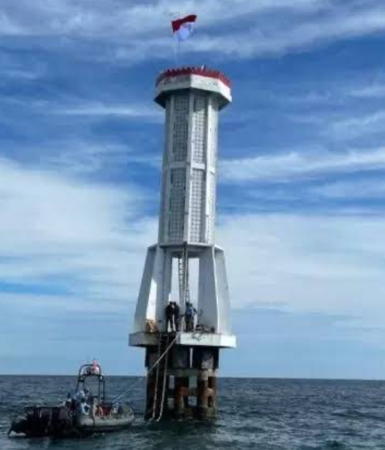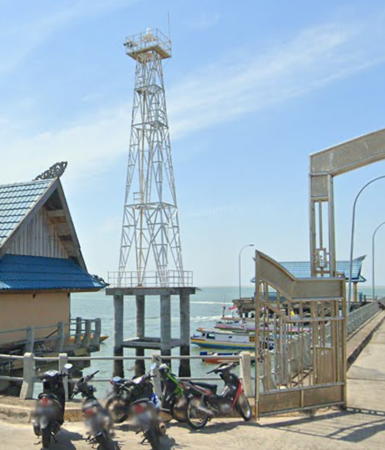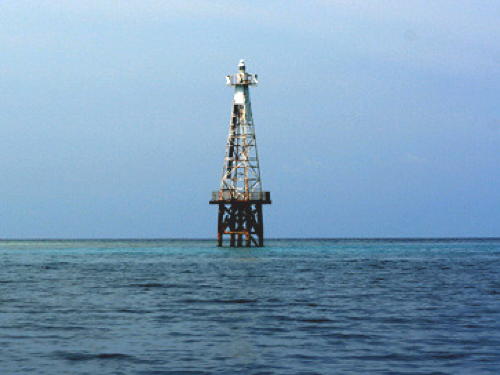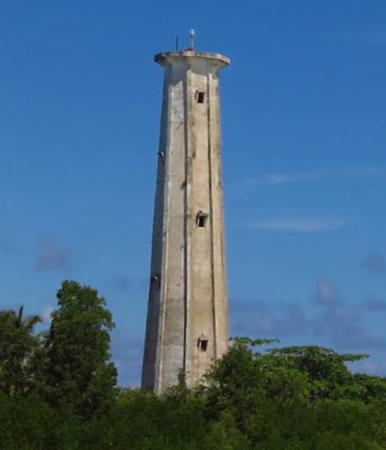The Republic of Indonesia has been independent since 1945 after having been the Dutch East Indies for more than 350 years. It is a huge country, stretching along both sides of the Equator for more than 46 degrees of longitude (roughly 5100 km or 3200 miles). Comprised of some 17,000 islands (more than 6000 inhabited islands), it has hundreds of major aids to navigation.
Borneo, known as Kalimantan in Indonesia, is the world's third largest island; it is roughly 1335 km (835 mi) long northeast to southeast. 73% of the island is Indonesian; the remaining portion includes the Malaysian states of Sarawak and Sabah and the independent sultanate of Brunei. Indonesian Kalimantan is separated from Sulawesi (Celebes) to the east by the Makassar Strait, from Java to the south by the Java Sea, and from Sumatra to the southwest by the Karimata Strait and Natuna Sea.
Indonesia is divided into 38 provinces (provinsi) and the provinces are subdivided into county units called regencies (kabupaten). Kalimantan includes five of the provinces. This page describes lighthouses of the northeastern Kalimantan coast facing the Sulawesi (Celebes) Sea. This includes the coasts of North Kalimantan Province and also the Berau Regency in northernmost East Kalimantan Province. North Kalimantan was separated from East Kalimantan in 2012.
More than 700 languages are spoken in Indonesia. The official national language, Indonesian (Bahasa Indonesia), was standardized from a form of Malay that served as a lingua franca across the archipelago. In Indonesian a lighthouse is a mercusuar or a menara suar. Tanjung is a cape, ujung is a headland or point of land, bukit is a hill, sungai is a river, kuala or muara is an estuary or river mouth, pulau is an island, karang is a reef, batu is a rock, laut is a sea, selat is a strait, teluk is a bay, pelabuhan is a harbor, and labuhan is a port.
Aids to navigation in Indonesia are operated and maintained by the Directorate of Marine Navigation within the Directorate General of Sea Transportation
ARLHS numbers are from the ARLHS World List of Lights. Admiralty numbers are from volumes F and Q of the Admiralty List of Lights & Fog Signals. U.S. NGA List numbers are from Publication 112.
- General Sources
- Online List of Lights - Indonesia - Kalimantan - Celebes Sea
- Photos by various photographers posted by Alexander Trabas.
- Indonesian Lighthouses
- Historic postcard views from the collection of Michel Forand.
- World of Lighthouses - Indonesia
- Photos by various photographers available from Lightphotos.net.
- GPSNauticalCharts
- Navigational chart information for eastern Kalimantan.
- Kalimantan Timur Map
- A useful map of eastern Kalimantan.
